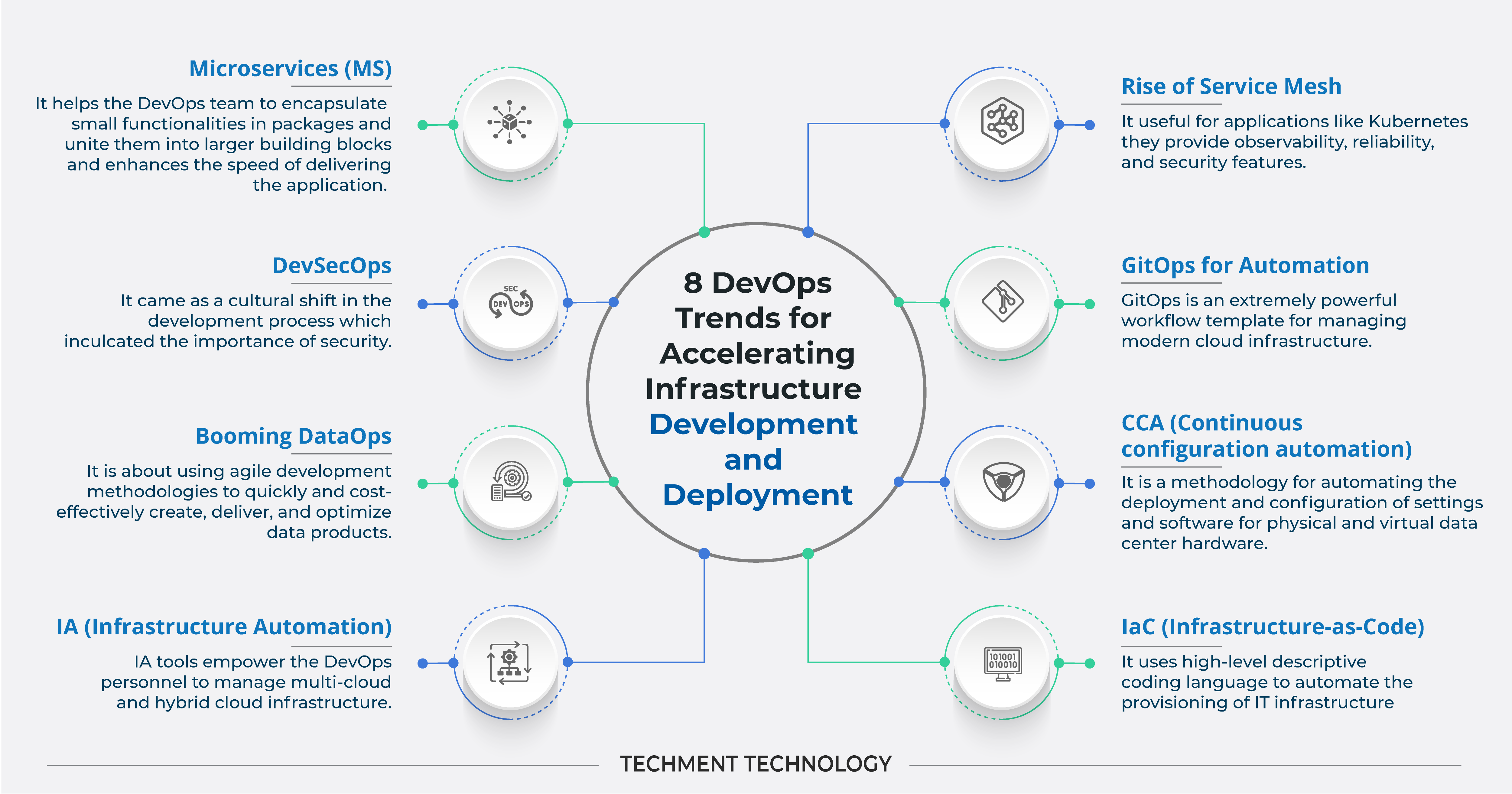Introduction
DevOps is a buzzword you’ve probably heard thrown around in tech circles. But what exactly is it? Simply put, DevOps is a combination of development (Dev) and operations (Ops) aimed at shortening the software development lifecycle and providing continuous delivery with high software quality. It’s the secret sauce that helps tech giants and startups alike move faster, more efficiently, and with greater flexibility.
History of DevOps
The concept of DevOps isn’t new; it has its roots in the Agile movement of the early 2000s. Agile methodologies emphasized collaboration and iterative development, setting the stage for DevOps. Over the years, DevOps has evolved to incorporate a broader set of practices and tools designed to foster a culture of collaboration and continuous improvement.
Core Principles of DevOps
Collaboration and Communication
At its heart, DevOps is about breaking down silos. Development and operations teams work together seamlessly, sharing responsibilities and goals.
Automation
Automation is the backbone of DevOps. By automating repetitive tasks, teams can focus on more strategic work. Automation also reduces the risk of human error and increases efficiency.
Continuous Integration and Continuous Delivery (CI/CD)
CI/CD is the practice of integrating code changes frequently and delivering them to production continuously. This approach ensures that software is always in a releasable state.
Monitoring and Logging
Continuous monitoring and logging are critical for understanding system performance and diagnosing issues quickly. This feedback loop helps teams to continuously improve their processes and products.

Benefits of DevOps
Faster Time to Market
With streamlined processes and automation, DevOps allows teams to deliver software faster. This speed gives businesses a competitive edge.
Improved Collaboration and Communication
DevOps fosters a culture of collaboration, breaking down barriers between teams and ensuring everyone is on the same page.
Enhanced Customer Satisfaction
By delivering updates and features more frequently, businesses can respond to customer needs faster, leading to higher satisfaction.
Increased Efficiency and Productivity
Automation and continuous improvement lead to more efficient processes and higher productivity.
DevOps Culture
Emphasis on Collaboration
A successful DevOps culture hinges on collaboration. Teams work together towards common goals, sharing responsibilities and successes.
Building a Blame-Free Environment
Mistakes are viewed as learning opportunities in a DevOps culture. This mindset encourages experimentation and innovation.
Encouraging Experimentation and Learning
DevOps promotes a culture of continuous learning and improvement. Teams are encouraged to experiment, fail fast, and learn from their experiences.
Key DevOps Practices
Version Control
Version control systems like Git are essential for managing code changes and collaboration.
Infrastructure as Code (IaC)
IaC allows teams to manage and provision infrastructure through code, making it easier to scale and manage environments.
Automated Testing
Automated testing ensures that code changes don’t introduce new bugs, maintaining software quality.
Continuous Deployment
Continuous deployment takes CI/CD a step further by automating the entire release process, ensuring that new features and fixes are delivered to users as soon as they are ready.
Monitoring and Feedback Loops
Continuous monitoring and feedback loops help teams to quickly identify and address issues, leading to more stable and reliable software.
DevOps Tools
Version Control Systems
- Git: The most widely used version control system, Git allows teams to collaborate on code and track changes.
CI/CD Tools
- Jenkins: An open-source automation server that supports building, deploying, and automating software development processes.
- CircleCI: A CI/CD tool that automates testing and deployment.
Configuration Management Tools
- Ansible: An open-source tool for automation, configuration management, and application deployment.
- Puppet: A configuration management tool that automates the provisioning and management of infrastructure.
- Chef: An automation platform that transforms infrastructure into code.
Containerization Tools
- Docker: A platform for developing, shipping, and running applications in containers.
- Kubernetes: An open-source system for automating the deployment, scaling, and management of containerized applications.
Monitoring Tools
- Prometheus: An open-source monitoring and alerting toolkit.
- Grafana: A tool for querying, visualizing, and understanding metrics.
Implementing DevOps in an Organization
Assessing the Current State
Before diving into DevOps, it’s crucial to assess where your organization currently stands in terms of processes, tools, and culture.
Setting Clear Goals and Objectives
Define what you aim to achieve with DevOps. Clear goals help in measuring success and guiding the implementation process.
Building a Cross-Functional Team
DevOps thrives on collaboration. Building a team with members from different functions ensures diverse perspectives and skills.
Choosing the Right Tools
Selecting the right tools is essential for successful DevOps implementation. Tools should align with your goals and integrate seamlessly with existing systems.
Continuous Improvement and Iteration
DevOps is not a one-time effort. Continuous improvement and iteration are key to long-term success.
Challenges in DevOps Implementation
Cultural Resistance
Changing the organizational culture can be challenging. Resistance to change is one of the biggest obstacles to DevOps implementation.
Legacy Systems and Processes
Legacy systems and processes can hinder the adoption of DevOps practices. Modernizing these systems is often necessary.
Skill Gaps
A lack of necessary skills can slow down DevOps adoption. Investing in training and development is crucial.
Tool Integration Issues
Integrating new tools with existing systems can be complex. Careful planning and testing are required to ensure smooth integration.
Case Studies of Successful DevOps Implementations
Amazon
Amazon’s adoption of DevOps practices has allowed it to deploy code every 11.7 seconds on average, significantly reducing time to market.
Netflix
Netflix uses DevOps to ensure seamless streaming experiences for millions of users worldwide. Their approach emphasizes automation and continuous delivery.
Etsy
Etsy’s DevOps transformation helped it to scale and improve its deployment processes, leading to faster and more reliable releases.

Future of DevOps
Emerging Trends
DevOps continues to evolve with emerging trends like GitOps, serverless computing, and site reliability engineering (SRE).
The Role of AI and Machine Learning in DevOps
AI and machine learning are starting to play a significant role in DevOps, from automating routine tasks to providing advanced analytics and insights.
Conclusion
DevOps is more than just a set of practices; it’s a cultural shift that emphasizes collaboration, automation, and continuous improvement. By adopting DevOps, organizations can deliver better software faster, enhance customer satisfaction, and stay competitive in a rapidly changing tech landscape.
FAQs
What is the primary goal of DevOps?
The primary goal of DevOps is to shorten the software development lifecycle and provide continuous delivery with high software quality.
How does DevOps differ from traditional IT operations?
DevOps differs from traditional IT operations by emphasizing collaboration, automation, and continuous improvement, whereas traditional IT operations often involve separate teams working in silos.
What are some common DevOps metrics?
Common DevOps metrics include deployment frequency, lead time for changes, mean time to recovery (MTTR), and change failure rate.
How can small businesses benefit from DevOps?
Small businesses can benefit from DevOps by delivering software faster, improving collaboration, and increasing efficiency and productivity.
What is the future of DevOps?
The future of DevOps includes emerging trends like GitOps, serverless computing, and increased use of AI and machine learning.


